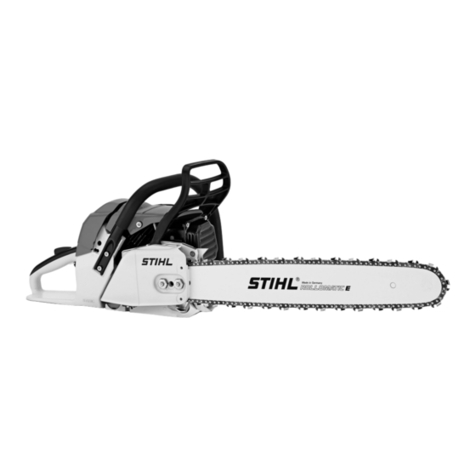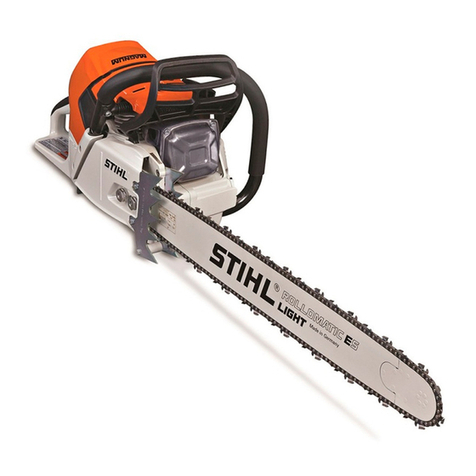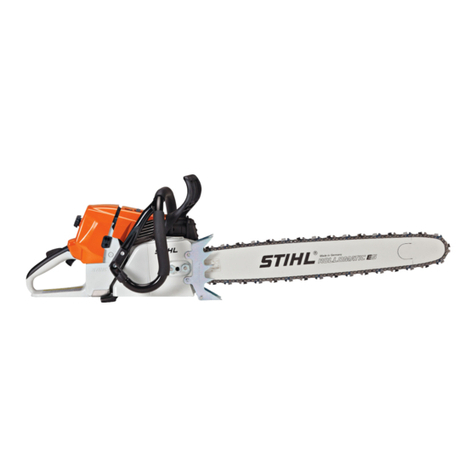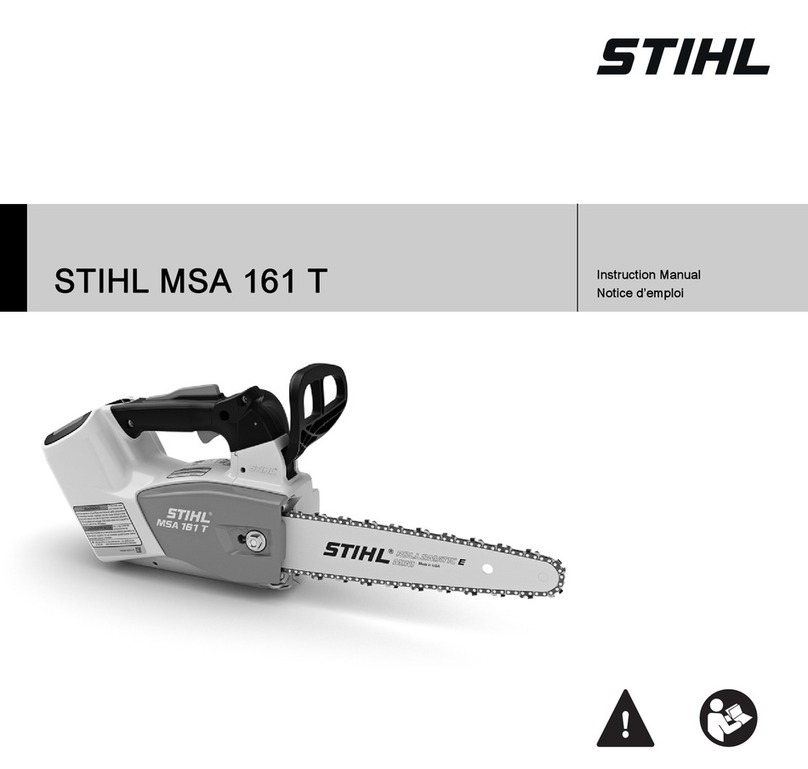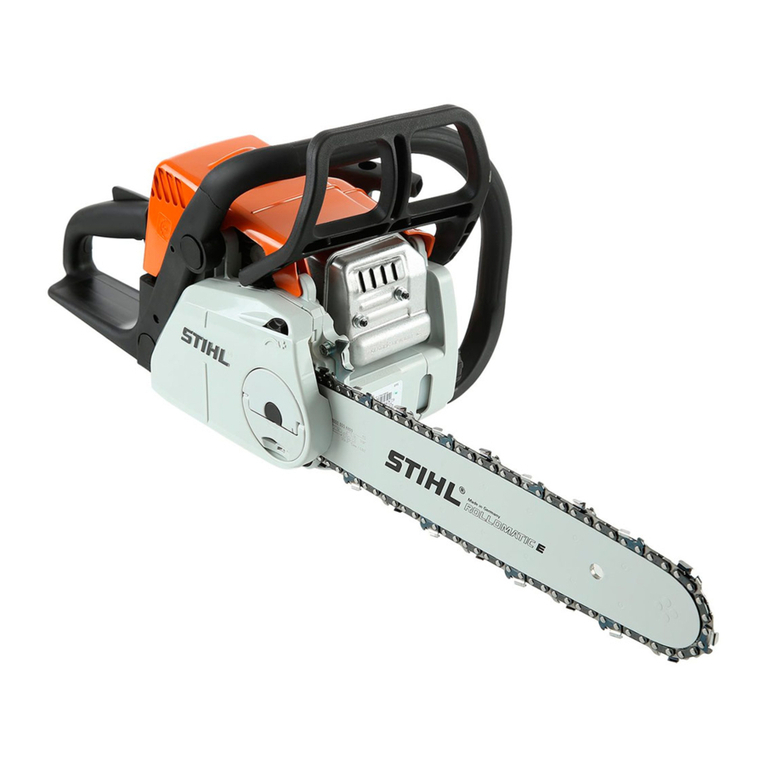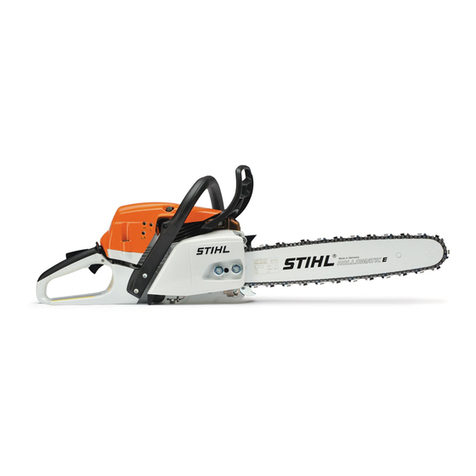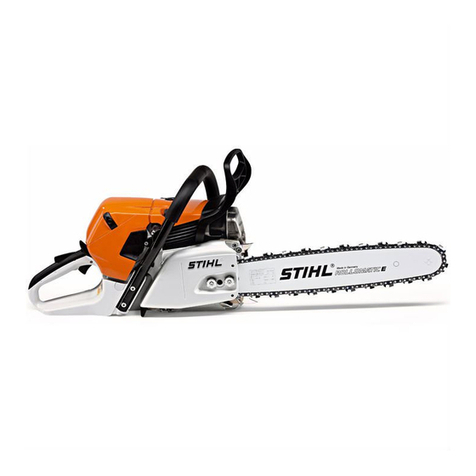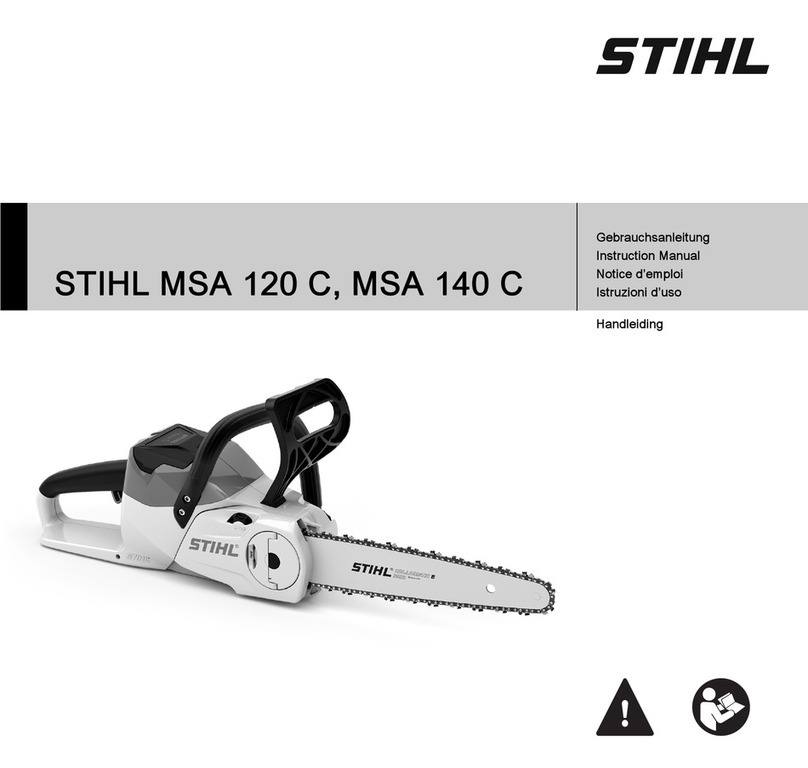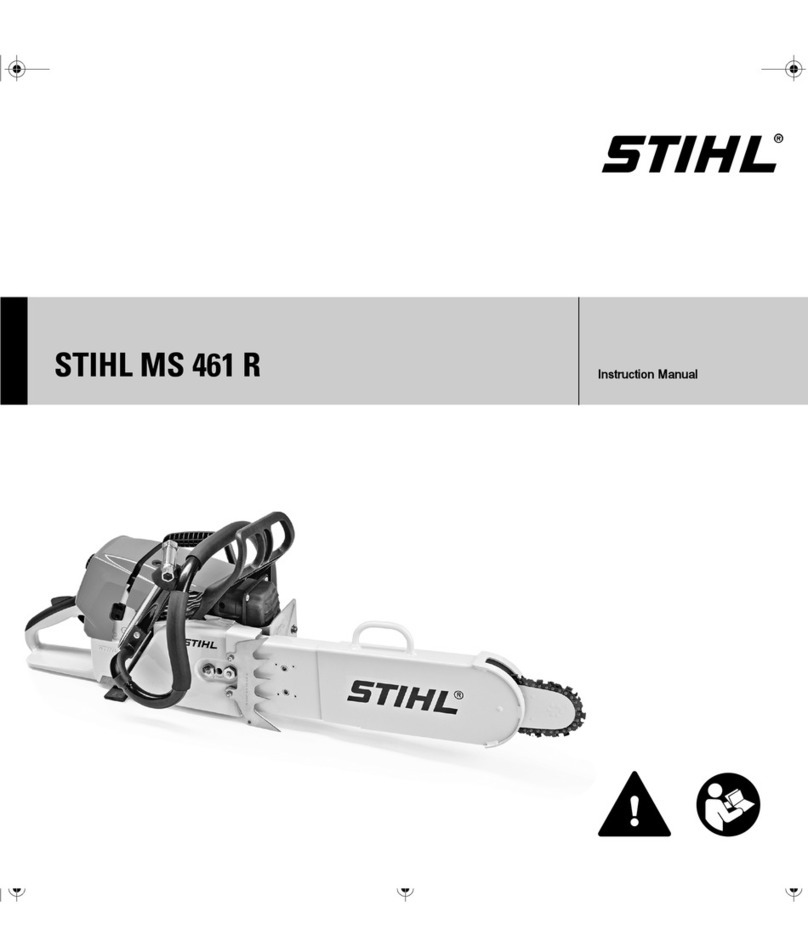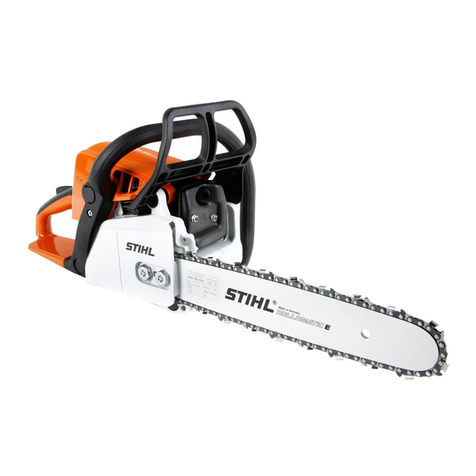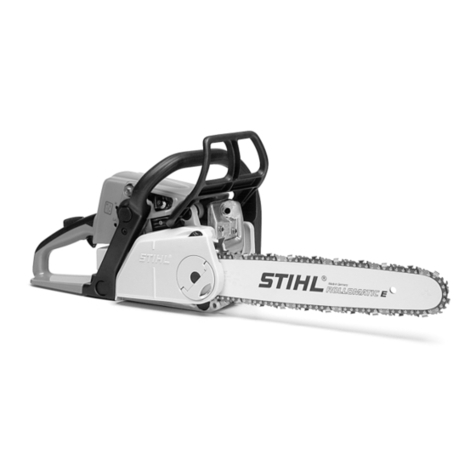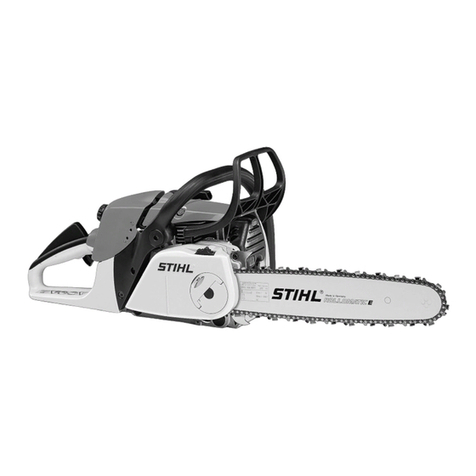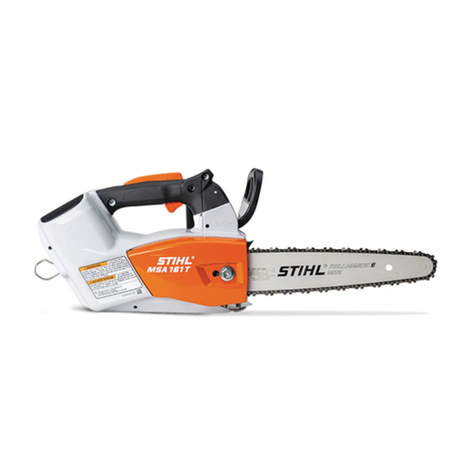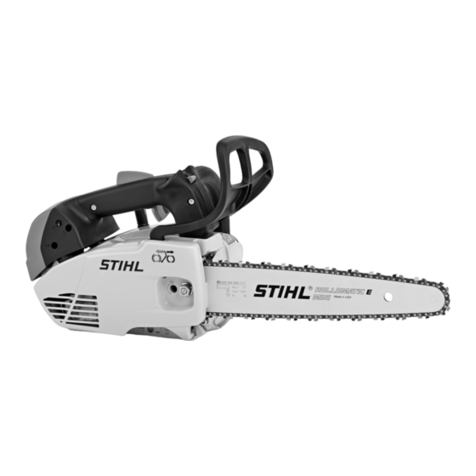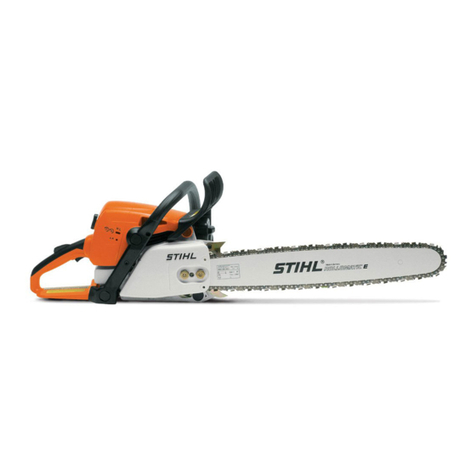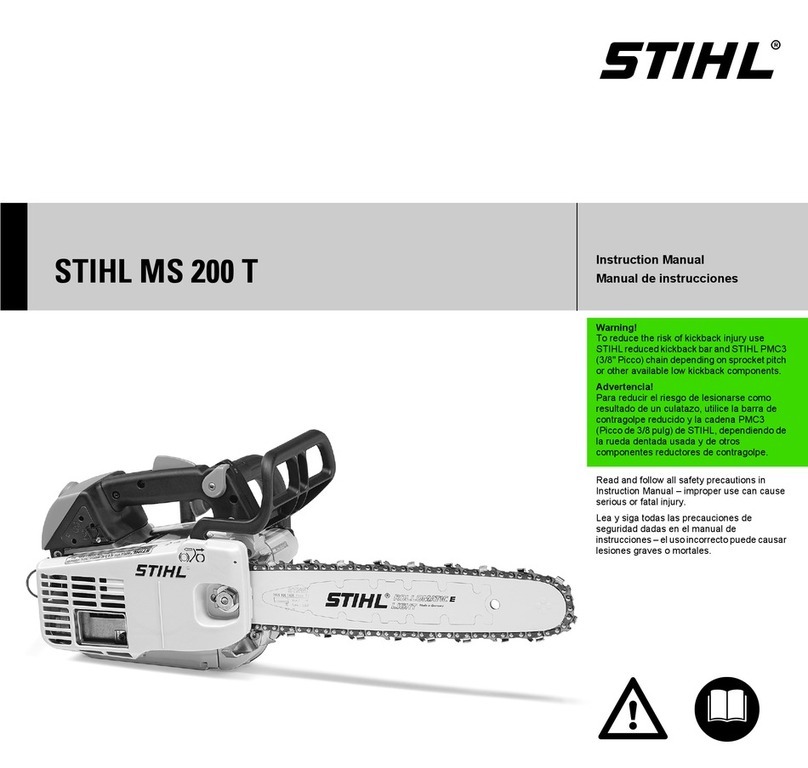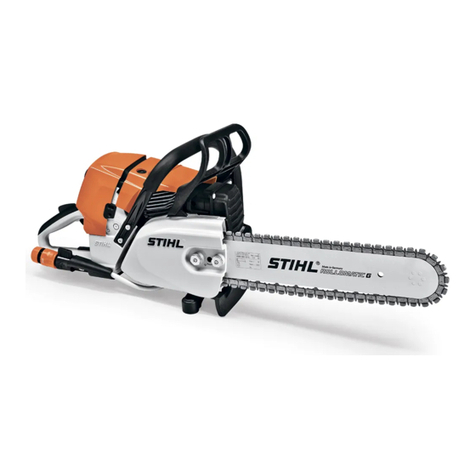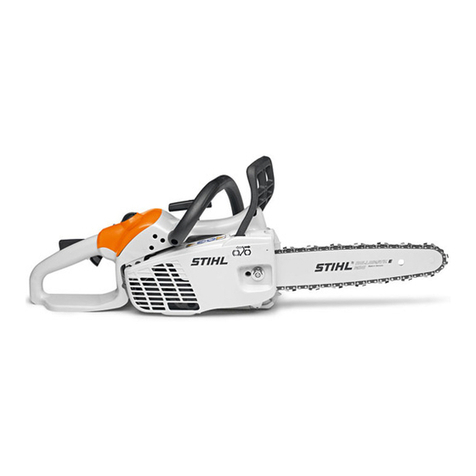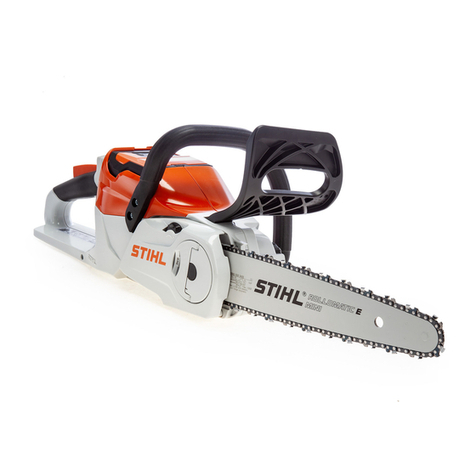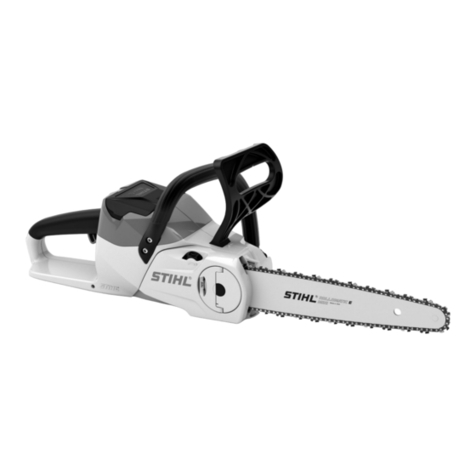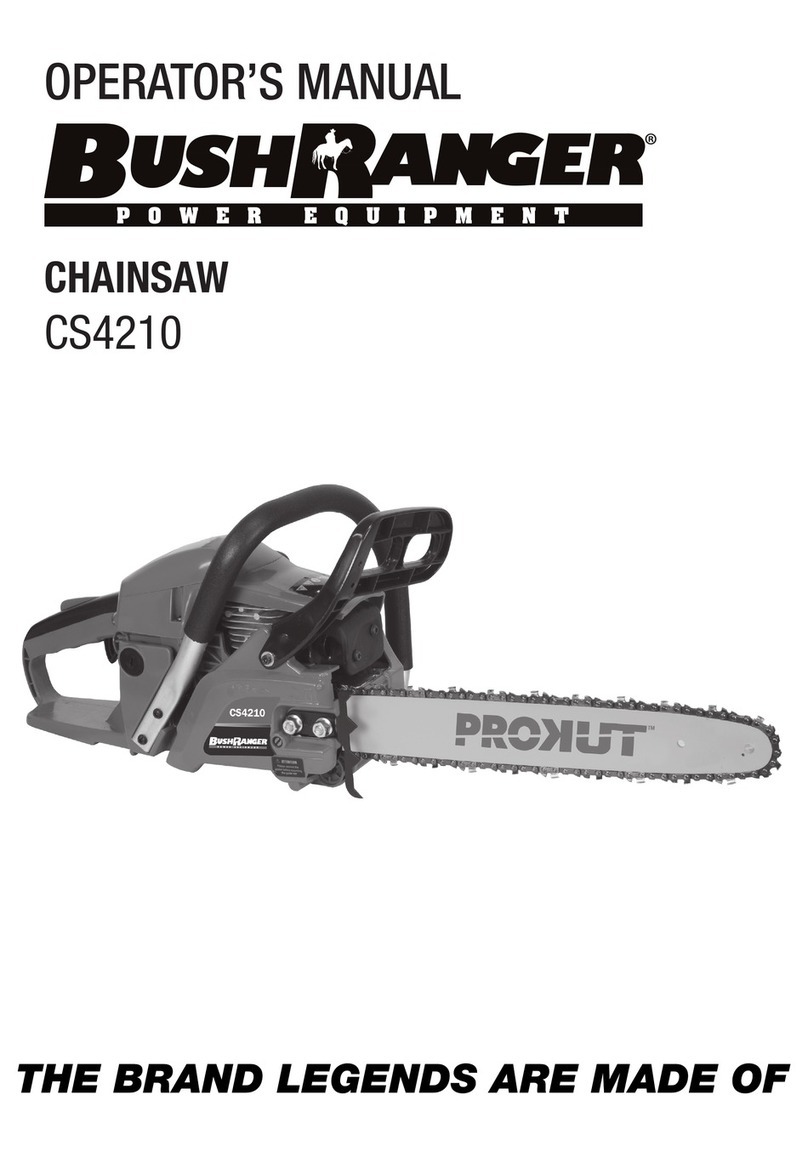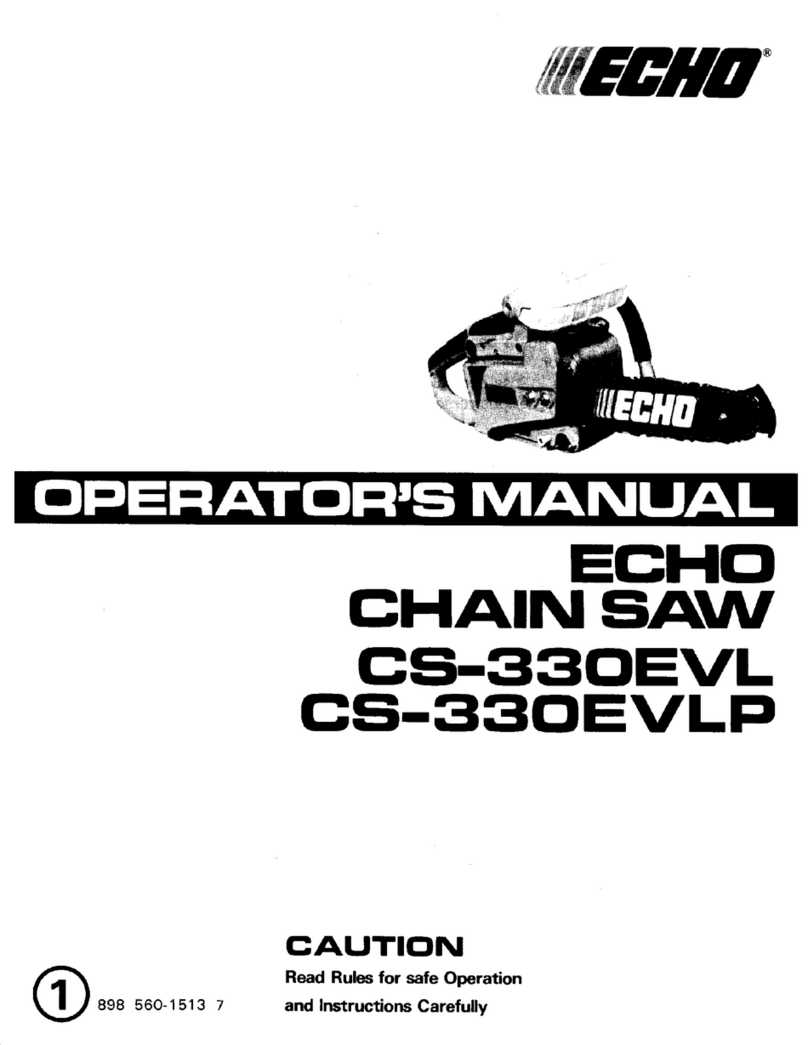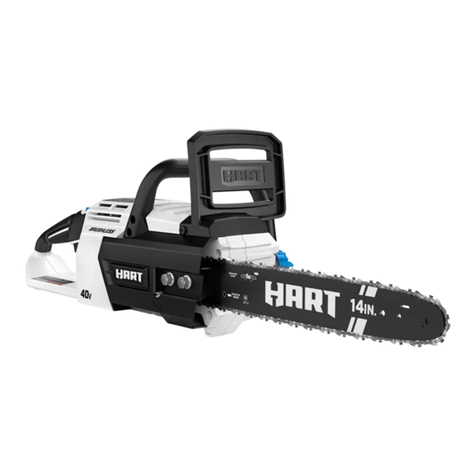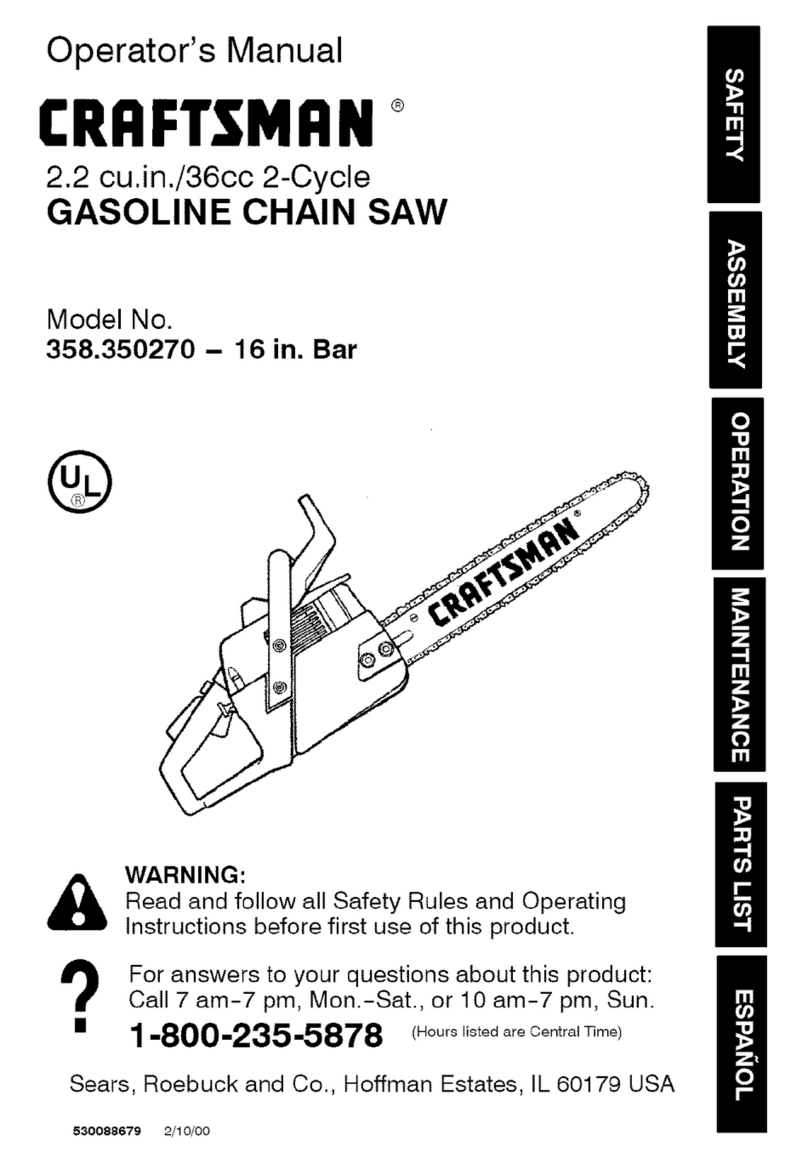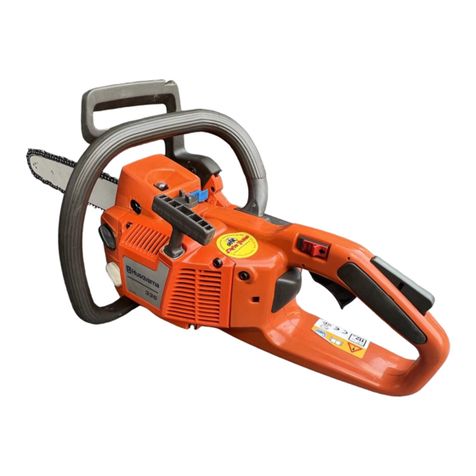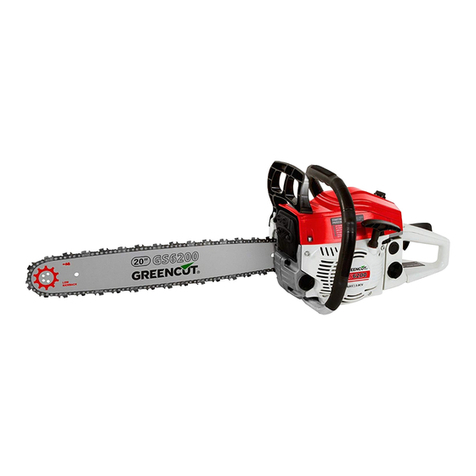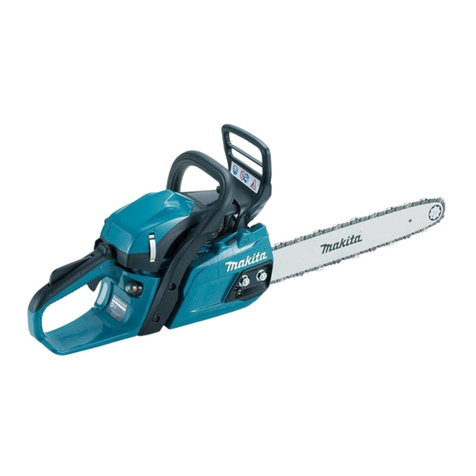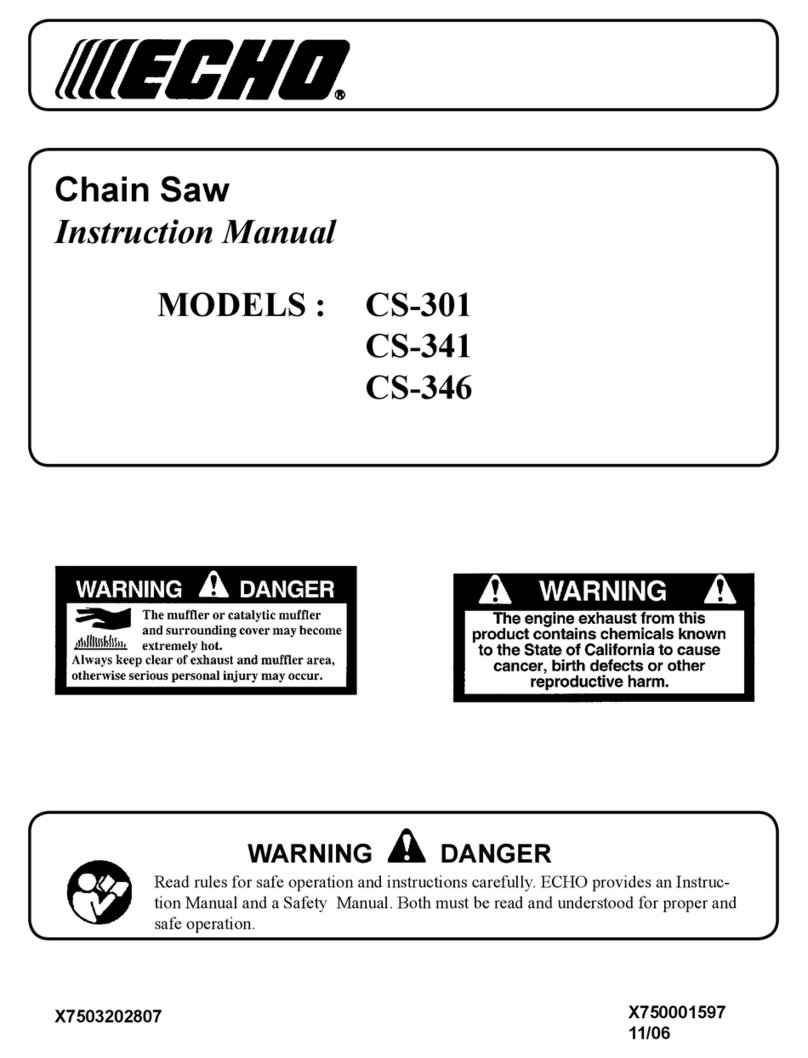
The use of this chainsaw for limbing (removing
branches) and felling is limited because its range
of movement is restricted by the connecting and
extension cables.
WARNING
■Using the chainsaw for purposes for which it is
not designed may result in serious or fatal inju‐
ries and damage to property.
►Use the chainsaw with an extension cable.
► Use the chainsaw as described in this
instruction manual.
4.3 The Operator
WARNING
■ Users without adequate training or instruction
cannot recognize or assess the risks involved
in using the chainsaw. The user or other per‐
sons may sustain serious or fatal injuries.
► Read, understand and save the
instruction manual.
► If you pass the chainsaw on to another per‐
son: Always give them the instruction man‐
ual.
►Make sure the user meets the following
requirements:
–The user must be rested.
–The user must be in good physical con‐
dition and mental health to operate and
work with the chainsaw. If the user’s
physical, sensory or mental ability is
restricted, he or she may work only
under the supervision of or as instructed
by a responsible person.
–The user is able to recognize and
assess the risks involved in using the
chainsaw.
–The user must be of legal age or is
being trained in a trade under supervi‐
sion in accordance with national rules
and regulations.
–The user has received instruction from a
STIHL servicing dealer or other experi‐
enced user before working with the
chainsaw for the first time.
–The user must not be under the influ‐
ence of alcohol, medication or drugs.
► If the user is working with a chainsaw for
the first time: Practice cutting logs on a
sawhorse or other support.
►If you have any queries: Contact a STIHL
servicing dealer for assistance.
4.4 Clothing and Equipment
WARNING
■Long hair can become entangled in the saw
during operation. This can result in serious
injuries.
►Tie up long hair so that it is above shoulder
level.
■ Objects can be thrown through the air at high
speed during operation. This can result in per‐
sonal injury.
► Wear close-fitting safety glasses.
Suitable safety glasses that have
been tested and labeled in accord‐
ance with EN 166 or national stand‐
ards are available from retailers.
►STIHL recommends that you wear a face
shield.
► Wear a long-sleeved, snug-fitting upper
garment.
■ Noise occurs during operation. Noise can
harm your hearing.
► Wear hearing protection.
■ Falling objects can cause head injuries.
► If there is a danger of falling objects
during operation: Wear a safety hard
hat.
■ Dust can be whipped up during operation:
Whipped up dust can damage the respiratory
passages and cause allergic reactions.
►If dust is whipped up and forms a cloud:
Wear a dust respirator mask.
■ Inappropriate clothing can snag on wood,
brush or the saw. Not wearing suitable cloth‐
ing may result in serious injury.
►Wear snug-fitting clothing.
► Do not wear a scarf or jewelry.
■ The user can come into contact with the rotat‐
ing saw chain during operation. This can result
in serious injuries.
►Wear long trousers with cut-retardant
inserts.
■ The user can be cut by the wood during oper‐
ation. The user can come into contact with the
saw chain during cleaning and maintenance
work. This can result in personal injury.
►Wear work gloves made of durable mate‐
rial.
■ Wearing unsuitable footwear may cause you
to slip or stumble. Contact with the rotating
saw chain can result in cuts. This can result in
personal injury.
English 4 Safety Precautions
4 0458-729-0121-B
